Blog
mar

VMware announced the release of VMware Horizon DaaS, its Desktop as a Service offering running on top of vCloud Hybrid Service, VMware’s owned and operated public Infrastructure as a Service (IaaS) service.
VMware will offer desktops through Windows Server environments, using the SPLA licensing terms. But it will also offer Windows Client Desktops, where users should bring their own SA licenses. Support for Remote Desktop Services will be added later this year.
feb

IIBM launched its new hybrid cloud offering called IBM Platform Computing Cloud Service.
The service, that runs on IBM SoftLayer infrastructure, integrates IBM Platform LSF and Platform Symphony workload management software delivered as SaaS and aims at that market segment that requires high-performance computing, where cloud adoption is still proceeding at a slow pace.
IBM PCCS is available in two models: a stand-alone cluster running in the Softlayer cloud (private cloud) where users directly access workloads and data and a hybrid cluster (cloud bursting) that integrates on-premise and cloud resources in a proper hybrid model.
This announcement, alongside with the recent IBM expansion of its worldwide datacenter presence, highlights IBM’s strategy to valorize the SoftLayer acquisition and to invest in the growing hybrid cloud market.
jan

VMware has released a paper titled: "VMware vCloud Automation Center 6.0 Reference Architecture", the paper which contains 21 pages provides recommendations about deployment topology, hardware specifications and scalability for vCloud Automation Center version 6.0, vCloud Application Director version 6.0 and IT Business Management Suite Standard Edition version 1.0. The paper provides recommendations for small, medium and large deployement scenario’s.
The paper contains the following sections:
- Overview
- Initial Deployment Recommendations
- Scalability Considerations
- High Availability Considerations
- vCloud Automation Center Machines
- Deployment Profiles
jan

IBM last week announced that it will commit over $ 1.2 billion in order to expand its global cloud footprint. IBM plans to have cloud facilities in major geographies and key financial centers expanding from 15 to 40 data centers worldwide. It will open data centers in Washington D.C., Hong Kong, London, Japan, India, China, Canada, Mexico and Dallas also it wants to expand to the Middle East and Africa in 2015. In order to achieve this IBM will use the technology which it acquired when buying Softlayer paying $2 billion in July last year. In order to expand its presence IBM has created a new business unit called the Watson Group, which will focus on development and commercialization of cloud-delivered innovations.
This week IBM also announced that plans to sell its x86 server business to Lenovo, the company which already aquired IBM’s PC business in 2005. Lenovo will take over
System x, BladeCenter and Flex System blade servers and switches, x86-based Flex integrated systems, NeXtScale and iDataPlex servers and associated software, blade networking and maintenance operations and pay about $2.3 billion.
IBM will retain its System z mainframes, Power Systems, Storage Systems, Power-based Flex servers, and PureApplication and PureData appliances.jan

Together with the announcement that Windows Azure Hyper-V Recovery Manager is now generally available, Microsoft also announced that Windows Azure has been validated for compliance with the Payment Card Industry (PCI) Data Security Standards (DSS) by an independent Quality Security Assessor (QSA).
In order to accept payment cards and to store, process and/or transmit cardholder data a PCI DDS certification, which is a global standard is needed. In order to help customers validate their applications running on top of Windows Azure for PCI DDS, Microsoft has made available two papers for download:
- Paper: Windows Azure PCI Attestation of Compliance
- Paper: Windows Azure Customer PCI Guide
Besides gaining the PCI DDS certification, Microsoft also announced that Windows Azure completed its annual ISO audit successfully. The scope for the ISO audit was expanded this time to include SQL Database, Active Directory, Traffic Manager, Web Sites, BizTalk Services, Media Services, Mobile Services, Service Bus, Multi-Factor Authentication, and HDInsight among others and already included Cloud Services, Storage, Virtual Machines and Virtual Networks.
jan

Microsoft announced General Availability of Hyper-V Recovery Manager. This means the service is supported by Microsoft for production and is backed with a Service Level Agreement.
Hyper-V Recovery Manager (HRM) is a cloud based service which coordinates failover and failback between two Microsoft System Center 2012 managed datacenters. The cloud based service is a control plane running on Windows Azure. It allows to create runbooks which coordinates the startup of virtual machines in a predefined order. It will also adjust IP-configuration of virtual machines if the secondary site is using a different IP-subnet than the primary site.
HRM is positioned by Microsoft as a better solution than VMware Site Recovery Manager (SRM). SRM is a DR coordination software solution as well. SRM needs to be installed on-premise and requires unlike HRM quite some mouse clicks to get configured.
jan

In 2013 VMware started delivering their own operated and owned public Infrastructure as a Service service. The service named vCloud Hybrid Service (vCHS) is currently available in the US only. A single datacenter in the UK is running in beta. Additional European datacenters will be rolled out in 2014.
vCHS allows customers to have full control over virtual machines and networking. Announced future services are Disaster Recovery as a Service , ability to backup virtual machines and Desktop as a Service.
vCHS user base is growing which allows VMware to lower their pricing for their Dedidated Cloud service. Unlike the other service called Virtual Private Cloud which is multi-tenant , Dedicated Cloud allows customers to have exclusive access to compute and memory resources of a host. This allows memory overcommitment and prevents licensing issues with vendors still maintaining an pre-cloud way of licensing based on licensing per physical CPU/socket.
Per January 1 2014 VMware reduced pricing on Dedicated Cloud by 50 percent, to 7 cents an hour for a fully protected, fully redundant 1 GB VM with 1 vCPU. If you’re a VMware customer, you’ll undoubtedly pay less than this MSRP price based on volume/commitment. The minimum commitment is one month.
jan

Microsoft Windows Azure entered the Leaders section of Gartner Magic Quadrant (MQ) for Enterprise Application for Platform as a Service. The MQ was published by Gartner January 7, 2014.
This position is shared with market leader Salesforce.com. The MQ in total contains 19 PaaS services.
Gartner publishes Magic Quadrants on many IT related services and solutions. A MQ provides a high level overview of available solutions in a specific market and discusses their strengths and cautions.
Gartner describes the cloud first policy of Microsoft and the agressive frequent updates delivering new features and enhancements. About every two weeks Microsoft releases new features and services.
The MQ mentions the ability for customers to run applications in-house or in Azure enabled by the mirroring of capabilities between Azure and private cloud. I miss the mentioning of using a Service Provider managed Azure based cloud. This capability is delivered using the Windows Azure Pack. This adds an additional choice for customers in location, management, costs & provider. The recent launch of Microsoft Cloud OS Network containing 25 Service Providers as member shows this additional choice.
dec

During VMworld in October this year, VMware announced version 6.0 of its automated virtual machine and physical server provisioning tool vCloud Automation Center (vCAC). It provides end-users with an Self-Service catalog in which they can request infrastructure components.
Today VMware released version 6.0, providing the following new functionality:
- - Ability for end users to request application services and monitor their deployment status
- This functionality comes from Application Director
- - Improved approval policy engine
- - End users can roll back system updates
- - External Services connection options
- - Policy based provisioning
- - New Advanced Service Designer allowing the design of user forms and provisioning workflows
- - Integration with IT Business Management Standard Edition
- - Support for VMware vCloud Hybrid Service, provision and perform basic administrative tasks on virtual machines deployed in vCloud Hybrid Services
- - Support for OpenStack (In addition to vSphere, vCloud Director, Amazon Web Services, Hyper-V, Kernel-based Virtual Machine, Citrix XenServer, and various physical server management interfaces)
- - Access vSphere machines via Remote Console
- - Support for the dynamic creation of isolated and routed networks and load balancers.
- - Support for vSAN as a datastore
- - Support for reuse of Puppet content to build application blueprints in Application Director
- - Support for Storage DRS
- - Support for LDAP services
- - Multi-tenancy improvements
- - Verb-oriented RESTFUL APIs in BETA.
dec

VMware yesterday announced that the VMware vCloud Hybrid Service now supports Direct Connect. Direct Connect offers a dedicated and secure private line connection in addition to IPsec VPN which is already available with each cloud service offering from VMware.
Customers can set up private line connectivity into their vCloud Hybrid Service instance via dedicated circuits from their facility, or cross-connections from their co-located data center, into the VMware cloud.
Customers can connect via a 1 or 10 Gbps port connection for a Dedicated Cloud and a 1 Gbps port connection for a Virtual Private Cloud. Direct connect is now available in both the Santa Clara, CA and Sterling, VA data centers hosted by VMware partner Savvis.
nov

vCenter Orchestrator plug-in for vCloud Director 5.5 allows access to vCloud Director’s functionalities and API to be used in vCenter Orchestrator, VMware’s workflow automation platform.
This new release has its main purpose in the complete support for vCloud Director 5.5 but also introduces new features such the enhanced performances of the object finder methods, the possibility to configure the cache timeout through the plug-in settings, the ability for Cloud administrators to automate the management of vApp and VM snapshots through the scripting objects of the plug-in and a couple of bug fixes.
A list of the resolved issues and of the known issues of this version can be found in the release notes.
nov

Amazon Web Services (AWS) announced at their 2013 re:Invent summit the company will start a Desktop-as-a-Service (Daas) offering. Amazon WorkSpaces as the service is called is a fully managed Windows 7 experience which will be available in four different bundles named Standard, Standard Plus, Performance and Performance Plus.
The Standard bundle offers 1 vCPU, 3.75 GiB of memory, and 50 GB of persistent user storage. All of the bundles include Adobe Reader, Adobe Flash, Firefox, Internet Explorer 9, and 7-Zip, among other utilities. The Plus bundles also offer Microsoft Office.
Pricing starts at $ 35 per month for Standard to $ 75 per month for the Performance Plus bundle. The service is currently available as a Limited Preview. Amazon did not provide information on a general availability date.
Many large US IT-companies are offering or preparing to offer a DaaS service. In October VMware announced it has acquired DaaS provider Desktone. Pricing is $35-40 per user per month. Microsoft is rumoured to be working on a DaaS platform named Mohoro running on their public cloud platform Windows Azure.
WorkSpaces offers a full virtual desktop with a Windows 7 user interface. Under the hood Windows Server 2008 is running. This because Microsoft licensing forbides to use Windows desktop operating systems in a multi-tenant hosting configuration. The desktop can be used with various devices including laptops, Kindles, iPads and Android tablets.
Amazon claims that WorkSpaces is about half of the cost of VDI.
Active Directory integration is possible so users can authenticate on Amazon WorkSpaces uses their corporate useraccount.
Amazon uses Teradici PCoIP display protocol to connect WorkSpaces to end user devices.
nov
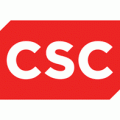
Computer Sciences Corporation, better known as CSC, the multinational headquartered in Virginia, USA, announced the acquisition of Santa Monica-based ServiceMesh, an enterprise-grade cloud management provider specialized in automation of the deployment and management of enterprise applications and platforms across private, public and hybrid cloud environments.
CSC is following a strategy that should transform the compay, over almost the last two years and following several acquisitions which include Infochimps and 42six Solutions and having signed last August an alliance agreement with AT&T, CSC is aiming to take a position among the big names of the technology solutions and services marketplaces, being able to offer cloud computing, big data, cybersecurity and next-generation applications.
The acquired company ServiceMesh brings to CSC its product called ServiceMesh Agility Platform, an integrated control point for governance, compliance and security across cloud applications and environments, empowering employees with self-service access to applications, platforms and services.
It is still unknown the amount CSC paid for the acquisition and the two companies expect to close the transaction in the third quarter of CSC’s fiscal year 2014.
CSC President and Chief Executive Officer Mike Lawrie declares:
The future of next-generation IT infrastructure will involve a set of multiple clouds utilized simultaneously by enterprises, ServiceMesh allows us to catalogue enterprise applications and orchestrate those applications dynamically to run in different clouds based on the characteristics of the applications. From our unique position as an independent global technology company, we will integrate those workloads for our clients through our portfolio of services and technologies.
oct

Microsoft today announced the General Availability of the newest versions of its Operating Systems Windows, both Windows 8.1 for clients and Windows Server 2012 R2 are now available for download after Microsoft released them on August 27th this year. Both Windows 8.1 and Windows Server 2012 R2 were made available earlier for its Technet and MSDN subscribers.
Now the product suite to also manage these new Operating Systems; System Center 2012 R2 is also available to download from Technet, MSDN and all the other channels available for customers and partners.
Some links detailing all the new functionality:
Windows Server 2012 R2:
System Center 2012 R2:
- What’s new in System Center 2012 R2 App Contoller
- What’s new in System Center 2012 R2 Configuration Manager
- What’s new in System Center 2012 R2 Data Protection Manager
- What’s new in System Center 2012 R2 Operations Manager
- What’s new in System Center 2012 R2 Orchestrator
- What’s new in System Center 2012 R2 Service Manager
- What’s new in System Center 2012 R2 Virtual Machine Manager
Microsoft isn’t putting any effort in further developing the Unified Installer it seems, since no update was provided. The Unified Installer was the component which could orchestrate the installation of the whole System Center Suite. There are other efforts currently from Microsoft which are capable of installing the System Center suite though, mainly the PowerShell Deployment Toolkit coming from Microsoft, but also the Hydration Kit which is a community solution based on the Microsoft Deployment Toolkit developed by Mikeal Nystrom, an Microsoft MVP. Both solutions aren’t updated yet to support the R2 final release.
oct

vCenter Operations Management Suite version 5.8 has 4 new features:
Monitor business critical applications
In the 5.8 release application monitoring is limited to Microsoft Exchange Server and SQL Server. vCenter Operations Management Packs for Microsoft applications will be available to get insight into the health of Microsoft applications. A management pack (MP) provides knowledge about an application. The MP will be able to discover application inter-dependencies and services. Also there is knowledge about what metrics to measure, what thresholds to set etc. The management packs for SQL and Exchange will provide health information for clusters. So it shows servers and instances in Database Availability Groups for example. And it shows the status of services like MSSQL Agent, MSSQL Analysis, MSSQL Report and MSSQL database. It also shows when for example the CPU has a high utilization indicating something is wrong.
The 3th pary OS and application management packs are part of the vCenter Operations Management Suite Enterprise edition.
Microsoft System Center Operations Manager (SCOM) also uses Management Packs. However these will go much deeper inside the applications than vCenter Operations. I believe vCenter Operations focusses mainly at the infrastructure level of the application.
Monitor fiber channel storage
Storage Analytics is another new feature of vCOPS. It allows a deep insight into the status of the Host Bus Adapter, Fabric and Storage array. It will answer questions like ‘why is my virtual machine slow?’. In this 5.8 release monitoring is limited to fiber channel storage. iSCSI and NFS support will come soon. The admin will get insight in latency and throughput. Errors like CRC, link loss and timeouts are being monitored and admins gets alerts.
The infrastructure management packs are part of the vCenter Operations Management Suite Advanced & Enterprise edition.
Amazon AWS and Hyper-V support
vCOPS uses vCenter Hyperic and Hyperic Management Pack for monitoring Hyper-V. An Hyperic agent is deployed on the Hyper-V server to get insight. It does monitoring of CPU, memory, disk and network. It is able to show capacity and performance of storage volumes. There are two ways to get information form the Hyper-V servers and VM’s running on it. Either by the Hyperic management pack for vCenter Operations, or by the SCOM management pack for vCenter Operations. The later is usefull for SCOM users. It is a kind of gateway between SCOM and vCenter Operations Manager.
Amazon services like EC2, Elastic Block Store, Elastic Map Reduce, Elastic Load Balancing and Auto Scaling Group can be monitored using the AWS management pack. The MP connects to the Cloudwatch service provided by Amazon. This is a REST API service. vCOPS provides a VM utilization dashboard showing performance statistics like cpu usage, memory usage, disk read etc for Amazon VM’s.
oct

Combining VMware technology, Cisco UCS and HP Blade servers, Verizon has already entered in the market with the Terremark Enterprise Cloud and Enterprise Cloud Managed edition offerings for enterprises and, in the fourth quarter, the company will launch in beta Verizon Cloud a new IaaS platform made of two services: Verizon Cloud Compute, equivalent of Amazon EC3 and Verizon Cloud Storage equivalent of Amazon S3 storage.
Even if the current Enterprise Cloud offerings will be maintained the direction that Verizon is taking leads to an accessible, billed-per-hours, open-source Xen-based instances.
Verizon aims to be a bigger player in the cloud panorama competitive versus Amazon, Microsoft and Google and has chosen to achieve this with two elements: self-service selectable levels of service and software-defined data centers.
The distinguishing factor, in fact, will be the chance to build a customized server with the desired amount of CPU, memory and storage in contrast with the trend to provide to customers predetermined combinations of resources.
To achieve their goals, these new solutions were custom designed for Verizon from a third-party partner, that achieved a density of 64 servers, 4 TB of RAM and 100 TB of storage in a single 10u “box” engineered to have a small quantity of hardware easily-upgradable components.
Both solutions will be launched in seven Verizon’s data centers: Culpepper, Va., Santa Clara, Calif., Denver, Miami, London, Amsterdam and Sao Paulo, Brazil; Asia will be added in 2014.
Even if the Verizon Cloud will be as agnostic as possible, supporting many hypervisors, APIs and VM image formats, to determine its success Verizon should focus on adding capabilities more valuable to developers exploring also the opportunity for a PaaS offering.
aug

Gartner has released its annual Magic Quadrant for Cloud IaaS now updated on a nine-month basis.
The Magic Quadrant evaluates vendors in the market, in terms of ability to execute ad completeness of vision and, also this year, shows in the strongest position, Amazon Web Services that, despite some well-known weaknesses, is the dominant vendor also in the enterprise market.
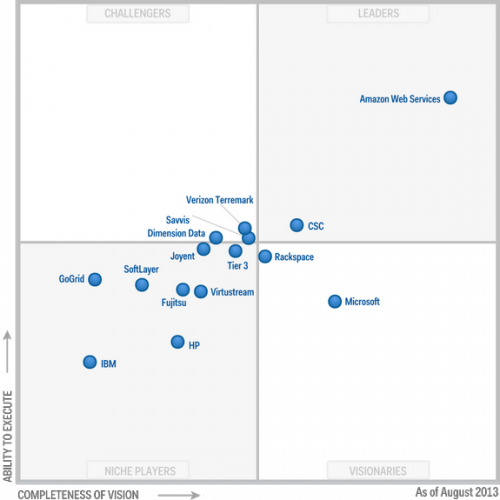
Other vendors are finally emerged adopting all the minimum required features and reducing the number of differentiators in the market.
In comparison to 2012 quadrant we can see in the Leaders position only CSC, still far from AWS, while all the other players in that position last year (Terremark, Savvis and Dimension Data) were moved to Challengers.
Microsoft enters the Visionaries quadrant while IBM and HP joined Fujitsu in the Niche Players quadrant.
aug

Along with Virtual SAN technology VMware launched NSX (available in Q4 2013) its network virtualization platform that virtualization.info already covered in March.
VMware NSX unifies in a single platform Nicira NVP and VMware vCloud Network and Security, covering the entire network and security model from Layer 2 to Layer 7 and integrating in the hypervisor to ability to manage switching, bridging, routing and firewall.
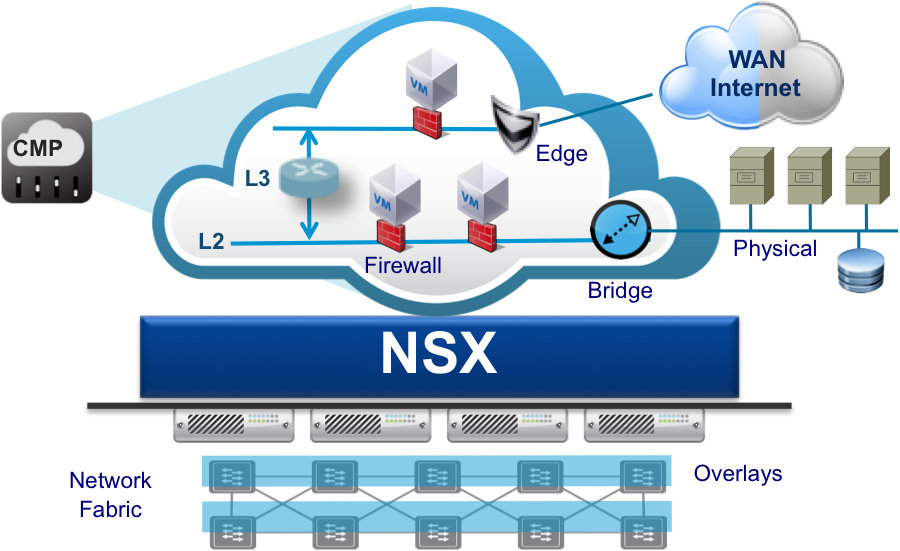
aug

Today is the first day at VMworld 2013 in San Francisco and VMware announced version 5.5 of its management platform for Infrastructure-as-a-Service (IaaS) clouds vCloud Director alongside of the announcement of vSphere 5.5.
Content Catalog
* Limit Catalog Sharing To Specific Organizations: System administrators can now limit access to shared catalogs. Catalogs can be shared to individual vCD Organizations as opposed to having to be shared to all Organizations.
* Publish and Subscribe Between vCloud Director Instances: Catalogs can now be published allowing users from other vCloud Director deployments to subscribe and share vApp templates. Shared catalogs can be synchronized on an on-demand basis as well as scheduled on a configurable reoccurring basis. The content catalog publish/subscribe feature includes:
* Improved synchronization performance: vCloud Director pre-exports published catalogs to the vCloud Director spool area. This improvement significantly reduces time to transfer catalog items to the subscriber. We have also made the synchronization more robust by adding file consistency check between publisher and subscriber
* Synchronization protocol extensibility: Out-of-box vCloud Director uses HTTPS-based protocol to transfer data to the subscriber side. Since catalog data is now pre-exported to the well-known spool area, customers can optionally choose use other transfer protocols of their choice to transfer the catalog content.
* Manual download of catalog item payload: When subscribing to a large public catalog over a slow link, customers can optionally disable the auto-downloading of the content when subscribing to the catalog. With auto-downloading turned off, vCloud Director will only download the meta-data information about each catalog item. Users can then pick the specific items to manually download the full payload of the catalog item just before instantiating it.
* Upload any content type to Catalog: Catalog content is no longer limited to just ISOs and OVF templates. Users can now upload any content type (e.g. scripts) to a catalog.
* Versioning: Simple versioning has been added to help with tracking updates to individual catalog items more effectively. vCloud Director will always return the latest version of the catalog item. Subscribing Catalogs will also get updated with the latest version of catalog items when they synchronize with the Publishing Catalog.
* External Storage Support: vCloud Director lets you turn your content stored on a web server into a catalog. Administrators are able to host files on this external storage and make them available to vCloud Director users as a remote catalog. You can search for keyword “Content Subscription Endpoint Specification” in the vCloud Director API documentation for more details.
vApp Provisioning and Lifecycle
* Configure CPU settings: Users are now able to customize the number of virtual CPUs, number of cores per socket, as well as the number of sockets for individual virtual machines.
* Customize hardware settings when deploying vApps: When deploying new vApps from templates users are now able to modify the CPU, memory, and disk settings.
* Edit template guest OS customization settings: Guest customization settings are now editable from within the vApp template.
* Support for hot add, remove, and extend of disks: Users can now add, remove, and extend virtual disks for running virtual machines.
* Support for hot add, remove of NICs: Users can add and remove virtual NICs from running virtual machines. Users can also modify network connections for running virtual machines.
* Clone vApp with Memory State: vCloud Directory now has the ability to clone running vApps to include the capturing of memory state of the virtual machines. These cloned vApps can also be added to the Content Catalog.
OVF Import and Export
* Add vApp Directly from OVF: vApps can now be instantiated in a Virtual Data Center directly from an OVF file. OVF files no longer need to be uploaded to the Content Catalog prior to being used to provision vApps.
* Save vApp to OVF: Deployed vApps and vApp templates can now be exported directly to an OVF file.
* Resume Interrupted OVF Transfers: Interrupted OVF transfers can now be resumed as opposed to having to restart the transfer from scratch.
Console Support on Mac OS and Added Browser Support on Windows and Linux
* vCloud Director now supports accessing the vCD Web UI from a Mac OS. It also adds support for Google Chrome.
* vCD now supports using the Firefox and Chrome browsers on MacOS to access the vCloud Director web UI, including the VM remote console capability.
* Chrome support on Linux and Windows has been added as well.
vCloud Director Virtual Appliance
* The vCloud Director beta includes support for the vCloud Director Virtual Appliance to help facilitate PoCs and Evals.
* vCloud Director cell is available in a virtual appliance form factor for quick-and-easy deployment and setup. With the appliance you can choose to use an internal/embedded database or an external database of your choice (Microsoft SQL Server or Oracle).
* As with prior releases, the vCD virtual appliance is available for PoC/Eval use only. For help with deploying and configuring the vCloud Director virtual appliance please see the vCloud Director 5.5 Virtual Appliance Deployment Guide.
aug

Today at VMworld 2013 VMware announced the general availability of its vCloud Hybrid Service. vCloud Hybrid Service, built on VMware vSphere, provides Infrastructure as a Service (IaaS) from the cloud providing a common management, orchestration, networking and security model and will be delivered by VMware’s partner ecosystem.
The new Hybrid Cloud Capabilities could be resumed as follows:
Direct Connect: Will allow customers to connect their data center network directly to vCloud Hybrid Service over private dedicated networks.
Disaster Recovery as a Service: Will automatically replicate applications and data to vCloud Hybrid Service, providing automated recovery in the event of an outage.
Cloud Foundry Platform as a Service: Will provide full support for the open source Cloud Foundry distribution and Pivotal CF.
VMware Horizon View Desktop-as-a-Service: Customers will be able to run Horizon View Desktops on vCloud Hybrid Service, and rapidly deploy new desktops.
* VMware vCloud Hybrid Service will be generally available in September from data centers located in Las Vegas, NV, Sterling, VA and Santa Clara, CA, with two classes of service:
- vCloud Hybrid Service Dedicated Cloud will provide physically isolated and reserved compute resources with pricing starting at 13 centsan hour for a fully protected, fully redundant 1 GB virtual machine with 1 processor.
- vCloud Hybrid Service Virtual Private Cloud will offer multitenant compute with full virtual private network isolation. Virtual Private Cloud pricing starting at 4.5 cents an hour for a fully protected, fully redundant 1GB virtual machine with 1 processor.
* Horizon View Desktop-as-a-service will be available in beta in Q4.
* Direct Connect will be available in October with a list price of $75 per port per month for a 1GB connection and $250 per port per month for a 10GB connection.
* Disaster Recovery as a service will be available in beta in Q4.
* Cloud Foundry support will be available in Q4.
july
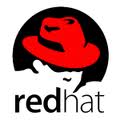
Red Hat released version 1.2 of its on-premise Platform as a Service (PaaS) offering: OpenShift Enterprise.
OpenShift Enterprise is a platform for application development, operations, and IT architecture built on top of Red Hat technologies, including Red Hat Enterprise Linux (RHEL), JBoss Enterprise Application Platform and OpenShift Origin, the upstream code that powers both OpenShift Enterprise and OpenShift Online. OpenShift Enterprise 1.2 is available immediately for deployment within on-premise datacenters or in private, public or hybrid clouds in North America, UK, Europe and to select customers in Asia and Latin America.
OpenShift Enterprise 1.2 includes several new features, including:
A brand new cartridge design and specification to complement the cartridge infrastructure within OpenShift: This new feature enables OpenShift Enterprise customers and partners to make additional technology services available to developers in a self-service fashion. In June, Red Hat announced the new cartridge specification and collaboration with OpenShift ecosystem partners to enable tighter integration with complementary partners including 10gen, Codenvy, Correlsense, EnterpriseDB, Iron.io, MongoLab, New Relic, OC Systems, and Zend. OpenShift Enterprise 1.2 brings the new cartridge specification and these partner capabilities to Red Hat’s on-premise private PaaS customers.
In addition to the cartridges, OpenShift Enterprise 1.2 offers the added ability to create Secure Sockets Layer (SSL) subdomains and take advantage of WebSocket for additional networking support, enabling customers and developers to implement cloud solutions that focus on the code and accelerate their applications’ time to market.
july

Cisco has announced that it will partner with Microsoft in order to accelerate the deployment of private and hybrid cloud infrastructures based on the Microsoft solutions Windows Server 2012 and System Center 2012. One part of the agreement is that both companies will align sales teams and channel partners.
Cisco and Microsoft will also stimulate the deployment of hundreds of private and hybrid cloud deployments worldwide using Microsoft’s Cloud OS Accelerate program. They will also be aligning their product technology, like the Nexus 1000V Switch for Windows Server Hyper-V and by releasing several validated reference architectures.
july
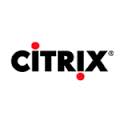
Citrix has announced that version 7 of its Virtual Desktop Infrastructure (VDI) product XenDesktop can now be deployed on top of a Windows Azure virtual machine. This is now possible because Microsoft has made Remote Desktop Services (RDS) Subscriber Access Licensing (SAL) available on Azure, paving the way to install XenDesktop on a VM running on Azure.
In order to support this announcement, Citrix published two new Design Guides detailing how to design a VDI environment on top of Windows Azure.
june

Microsoft and Oracle today announced a partnership allowing customers to run Oracle Software, including Java, Oracle Database and Oracle WebLogic Server on top of Windows Server Hyper-V and in Windows Azure and receive full support from Oracle.
Oracle will certify and support Oracle software — including Java, Oracle Database and Oracle WebLogic Server — on Windows Server Hyper-V and in Windows Azure. Microsoft will also offer Java, Oracle Database and Oracle WebLogic Server to Windows Azure customers, and Oracle will make Oracle Linux available to Windows Azure customers.
june
Infoblox IPAM plug-in for VMware vCAC

vCloud Automation Center (vCAC), as a part of the VMware vCloud Suite, offers automated provisioning on both private and public clouds and physical infrastructures, the advantages in terms of processes acceleration and simplification often collide on manual tools and procedures, when the focus shifts on network services configurations.
This week Infoblox, a company active in the network control automation market, announced the integration of its IP Address Management (IPAM) Plug-in for VMware with vCAC; this plug-in automates IP address allocation/de-allocation along with the creation/deletion of DNS host records directly to virtual machines and can be used to automate traditionally manual functions as IP addresses assignment, management of VMs collections, etc.
Infoblox IPAM Plugin-in for VMware is available as a no-charge extension to the Infoblox DNS, DHCP, IP Address Management (DDI) product.
june
NetApp announces Tech Preview of project Shift, allowing switching between virtualization platforms without migrating data
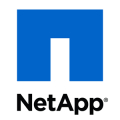
NetApp, provider of storage solutions has released a Tech Preview of its Project Shift as announced by Vaughn Steward, Director and Cloud Computing Evangelist at NetApp. Shift allows customers to change the virtualization platform their VMs run on without migrating any data. It does so by using a Windows PowerShell commandlet part of the DataONTAP PowerShell Toolkit provided by NetApp.
Shift currently supports Physical to Virtual (P2V) and Virtual to Physical (V2P) but also Virtual to Virtual (V2V) migrations between Citrix XenServer, Microsoft Hyper-V and VMware ESXi.
The introduction of these kind of technologies are very important now that multi-vendor virtualization platforms are being introduced within companies. Allowing customers with multi-vendor virtualization platforms to switch VMs between different platforms simplifies management.
may
VMware vCloud Automation Center 5.2

VMware has released vCloud Automation Center (vCAC) 5.2 based on DynamicOps Cloud Automation Center 4.5 that VMware acquired in July 2012. The product offers automated virtual machines and physical server provisioning on both on-premises and cloud infrastructures with a good level of process governance.
Among the new features introduced noticeable are the support for Hyper-V 2012 and KVM on Red Hat Enterprise Virtualization 3.1, a better integration with VMware vCloud Director and resource reclamation for Amazon Web Services.
may
VMware announces more information about vCloud Hybrid Services

vCloud Hybrid Service provides Infrastructure as a Service (IaaS) from the cloud providing a common management, orchestration, networking and security model and will be delivered by VMware’s partner ecosystem. Today VMware announced that the vCloud Hybrid Service will be generally available in Q3 of this year, with an Early Access program which starts in June.
vCloud Hybrid Service Dedicated Cloud will provide physically isolated and reserved compute resources and will be sold on an annual term with pricing starting at 13 cents an hour for a fully protected, fully redundant 1 GB virtual machine with 1 processor.
vCloud Hybrid Service Virtual Private Cloud has a multitenant compute resource model, but with dedicated allocations for customers. Virtual Private Cloud will be sold on a monthly term with pricing starting at 4.5 cents an hour for a fully protected, fully redundant 1GB virtual machine with 1 processor.
may
Paper: Infrastructure-as-a-Service Product Line Architecture Fabric Management Architecture Guide

Microsoft has released a paper titled: "Infrastructure-as-a-Service Product Line Architecture Fabric Management Architecture Guide". The paper which contains 69 pages provides guidance to develop solutions for a Microsoft private cloud infrastructure in accordance with the IaaS PLA patterns that are identified for use with the Windows Server 2012 and System Center 2012 Service Pack 1 (SP1). This paper also has an accompanying paper titled: ”Infrastructure-as-a-Service Product Line Architecture Fabric Architecture Guide” which covers the development of the associated fabric architecture.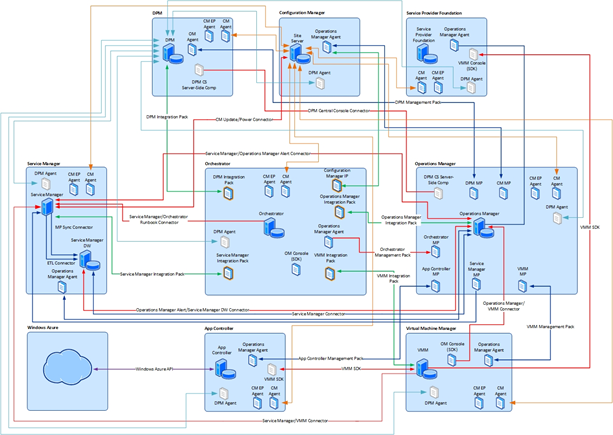
april
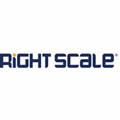
RightScale offering a multi-cloud management solution has announced that it now officially supports Windows Azure Infrastructure Services, which was released earlier this week.
With the added support for Windows Azure Infrastructure Services, Rightscale now supports Amazon Web Services, Datapipe, Google Cloud Platform, HP Cloud, IDCF Yahoo! Japan, Logic Works, Rackspace, Softlayer and Windows Azure and the CloudStack, Eucalyptus and Openstack Private Cloud solutions. RightScale now offers a Dashboard and API to manage all the supported cloud platforms from one management console. The product is offered in several editions from a free version to an Enterprise edition.
april

Microsoft today announced the general availability of Windows Azure Infrastructure Services, an Infrastructure as a Service (IaaS) offering hosted on Windows Azure, which it already announced in 2010. Up until now Microsoft only offered Platform as a Service on Windows Azure. Between 2010 and today Microsoft has been building the IaaS offering extending it with additional functionality. Microsoft also added support for Windows Azure to its on-premise System Center Suite of products. Windows Azure Infrastructure Services offers both Windows Server and Linux Virtual Machines plus Azure Virtual Network. Supported VMs available in the Windows Azure Virtual Machine Gallery are: Windows Server 2008 R2 and Windows Server 2012 and the following Linux flavors: OpenSUSE 12.1, CentOS 6.2, Ubuntu 12.04 and SUSE Linux Enterprise Server 11 SP2. Also included in the release are the Big Compute VMs which Microsoft announced in November last year. Azure Virtual Network allows customers to extend the internal corporate network to Azure using a site-to-site IPSec VPN which used to be known as project Brooklyn as covered by ZDNet in September last year.
april

During its annual Microsoft Management Summit (MMS) event held in Las Vegas, Microsoft announced the general availability of Windows Azure Active Directory (WAAD). WAAD is Active Directory hosted on Windows Azure, currently already used by Windows Azure, Windows Intune and other SaaS services provided by Microsoft. Customers can use WAAD to manage or revoke employee access to cloud based LOB applications, delivers Single Sign On and to manage federation and access for partners and customers. Active Directory can provide Identity and Access Management and offers an enterprise grade, high availability cloud service run from 14 datacenters spread across the United States, Europe and Asia.
april
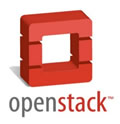
Piston Enterprise OpenStack. Piston Cloud, founded in January 2011 by former NASA and Rackspace leaders, joined OpenStack Foundation as a gold member in September 2012. The company raised $8M in a series B funding from Cisco System, Data Collective, Divergent Ventures, Hummer Winblad, Swisscom Ventures and True Ventures in February 2013. Piston Enterprise OpenStack 2.0, is a bare-metal cloud operating system for deploying and managing a private Infrastructure-as-a-Service (IaaS) cloud environment.
Among the highlights of this new release: Out of the Box Storage: Piston Enterprise OpenStack 2.0 now supports pass-through mode, allowing users to use the existing infrastructure with RAID-based Serial Attached SCSI (SAS) or SATA equipment. Add Virtual Machines in Less than a Second: Piston Enterprise OpenStack includes Virtual Memory Streaming (VMS), a commercial extension to KVM that provides true live migration and powerful multi-server memory oversubscription. SDN Compatibility: Piston Enterprise OpenStack is compatible with the software-defined networking (SDN) vendor ecosystem and automates the configuration and management of a network configuration, including traffic shaping and L2 segregation. Automated Provisioning and Management: With MoxieHA, users can perform security updates, apply complete system upgrades or re-balance VMs, without system or VM downtime. Configuration Management Without the Configuration: CloudBoot is a system orchestration framework that detects and provisions hardware using an Intelligent Platform Management Interface (IPMI) and netboots the nodes to a hardened, embedded Linux environment and then passes off system control to MoxieHA. More Hardware Options: Piston Enterprise OpenStack is 1nteroperable with other OpenStack products and can be deployed on commodity hardware from any major x86 vendor, including IBM, Dell, Cisco, HP and Supermicro.
Joshua McKenty, CTO and co-founder of Piston Cloud, said: The servers in today’s data center are like puppies – they’ve got names and when they get sick, everything grinds to a halt while you nurse them back to health, Piston Enterprise OpenStack is a system for managing your servers like cattle – you number them, and when they get sick and you have to shoot them in the head, the herd can keep moving. It takes a family of three to care for a single puppy, but a few cowboys can drive tens of thousands of cows over great distances, all while drinking whiskey.
mar

This small paper (just 16 pages), intended for a technical audience, focuses on resilency, in the specific provides insight and information regarding the use of VMware vSphere PowerCLI to automate the recovery of a vCloud Director–based infrastructure.
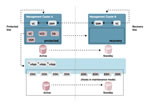 VMware vCloud Director® enables enterprise organizations to build secure private clouds that dramatically increase datacenter efficiency and business agility. Coupled with VMware vSphere®, vCloud Director delivers cloud computing for existing datacenters by pooling vSphere virtual resources and delivering them to users as catalog-based services. It helps users build agile infrastructure-as-a-service (IaaS) cloud environments that greatly accelerate the time to market for applications and the responsiveness of IT organizations.Resiliency is a key aspect of any infrastructure—it is even more important in IaaS solutions. This technical paper was developed to provide additional insight and information regarding the use of VMware vSphere PowerCLI™ to automate the recovery of a vCloud Director–based infrastructure. In particular, it focuses on automation of the recovery steps for vCloud Director 1.5–managed VMware vSphere vApp™ workloads. The recovery of management components can be achieved using VMware® vCenter™ Site Recovery Manager™ and will not be discussed. It is already available in the original VMware vCloud Director Infrastructure Resiliency Case Study.vSphere PowerCLI is a powerful command-line tool that enables users to automate all aspects of vSphere management, including network, storage, virtual machine, guest operating system (OS) and more. Included since the release of version 5.0.1, vSphere PowerCLI introduced support for vCloud Director. vSphere PowerCLI is distributed as a Microsoft Windows PowerShell snap-in and includes more than 300 PowerShell cmdlets, along with documentation and examples.This technical paper discusses the use of PowerShell and PowerCLI to automate the recovery of vCloud Director resource clusters.
VMware vCloud Director® enables enterprise organizations to build secure private clouds that dramatically increase datacenter efficiency and business agility. Coupled with VMware vSphere®, vCloud Director delivers cloud computing for existing datacenters by pooling vSphere virtual resources and delivering them to users as catalog-based services. It helps users build agile infrastructure-as-a-service (IaaS) cloud environments that greatly accelerate the time to market for applications and the responsiveness of IT organizations.Resiliency is a key aspect of any infrastructure—it is even more important in IaaS solutions. This technical paper was developed to provide additional insight and information regarding the use of VMware vSphere PowerCLI™ to automate the recovery of a vCloud Director–based infrastructure. In particular, it focuses on automation of the recovery steps for vCloud Director 1.5–managed VMware vSphere vApp™ workloads. The recovery of management components can be achieved using VMware® vCenter™ Site Recovery Manager™ and will not be discussed. It is already available in the original VMware vCloud Director Infrastructure Resiliency Case Study.vSphere PowerCLI is a powerful command-line tool that enables users to automate all aspects of vSphere management, including network, storage, virtual machine, guest operating system (OS) and more. Included since the release of version 5.0.1, vSphere PowerCLI introduced support for vCloud Director. vSphere PowerCLI is distributed as a Microsoft Windows PowerShell snap-in and includes more than 300 PowerShell cmdlets, along with documentation and examples.This technical paper discusses the use of PowerShell and PowerCLI to automate the recovery of vCloud Director resource clusters.